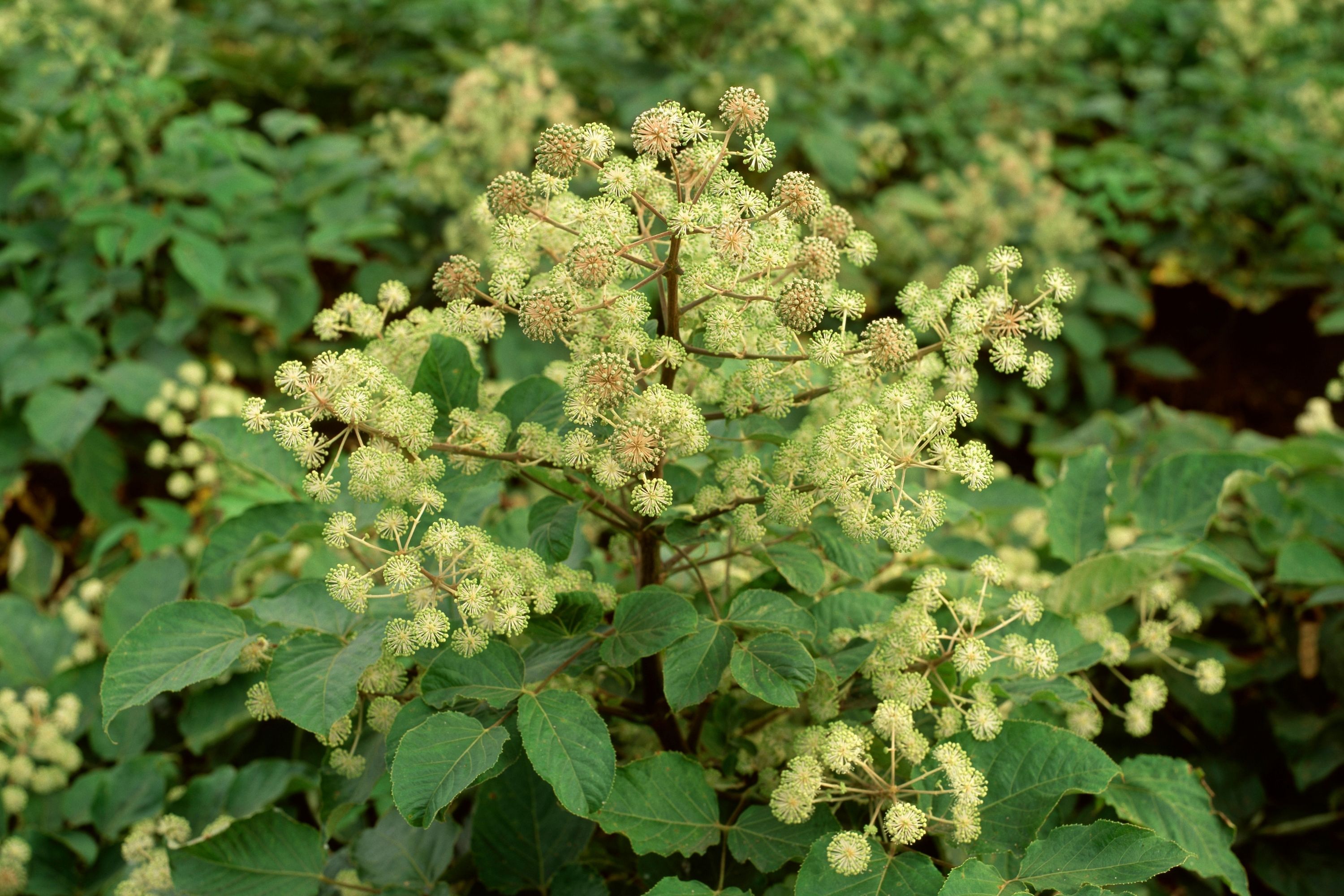Spikenard
(Aralia cordata)

Description
Aralia cordata is an upright herbaceous perennial plant growing up to 2 to 3 metres in height, native to Japan, Korea and eastern China. Its common names include spikenard, herbal aralia, udo, Japanese spikenard, and mountain asparagus. It is commonly found on the slopes of wooded embankments. Aralia cordata is a species of Aralia in the family Araliaceae. The plant yields new shoots every spring, which are blanched and then eaten as a vegetable. In Korea, the dried root of the plant has been traditionally used as medicine. The young shoots have a strong yet pleasant distinct aromatic flavor. In addition to food and medicinal use, the plant is cultivated as an ornamental. Aralia cordata is classified as a dicot and a eudicot. The leaves are alternate, large, and double to triple pinnate with leaflets 7 to 15 centimetres long, and 5 to 10 centimetres (2.0 to 3.9 in) broad. The flowers are produced in large umbels of 30 to 45 centimetres (12 to 18 in) diameter in late summer, each flower small and white. The fruit is a small black drupe 3 millimetres (0.12 in) diameter, and may be toxic to humans. In the wild, the plant achieves a height of 1.2 to 1.8 metres (3.9 to 5.9 ft). It has golden leaves in the spring and an abundance of large bright green ones in the summer. It has a hefty and plump root stock with shoots 60 to 90 centimetres (2.0 to 3.0 ft) in length. It can reach optimal growth when planted in rich soil. During the summer it produces loose flower bunches 90 centimetres (3.0 ft) in length, which are attractive to bees and flies, making it ideal for beekeepers. It can be grown using seed or propagated from cuttings. Aralia cordata is widely grown for food in Japan. In the early 1900s it was imported into the United States; however, it did not become popularly commercialized. In Korea, the dried root has been traditionally used as medicine to treat inflammation, fever and pain. Aralia cordata can be grown in normal, sandy, or clay soil with a neutral or acidic content of pH 5.0 to 7.5. Organic material should be added to clays and sands. It is an easy plant to grow, and does not require fertilizer. The plant grows rapidly, attaining a size up to 1.8 to 2.7 metres in height and width in a single growing season. It can tolerate freezing temperatures during winter, as it dies back and then re-grows in the spring, yielding for six years or more. It requires little labor; however the shoots require blanching if intended for food use.
Taxonomic tree:







